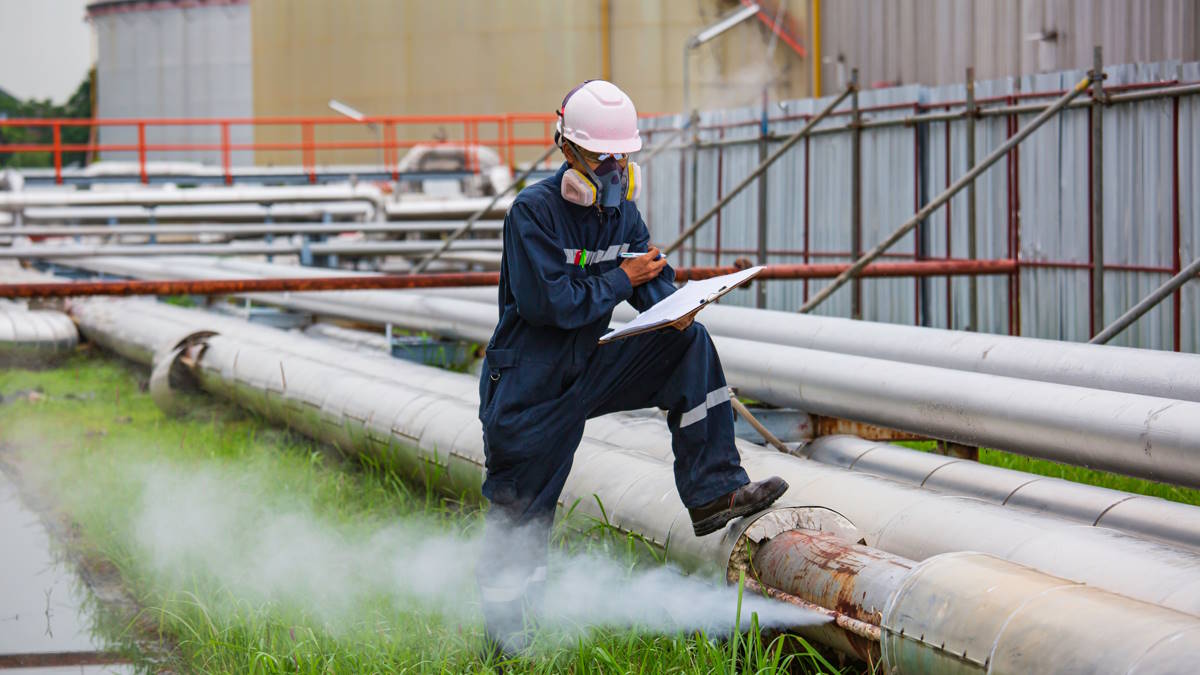By implementing comprehensive corrosion management strategies, industries can reduce maintenance costs, extend asset life, improve safety, and minimize environmental impact.
By Abel De la Cruz Pérez*
Corrosion Management (GC) and Corrosion Engineering (IC) are two disciplines related to the study, prevention and control of the corrosion phenomenon. This consists of the deterioration of metallic materials by chemical or electrochemical reactions with the environment.
However, it is important and necessary to differentiate between the two concepts if we are to effectively and efficiently undertake reducing the significant impact of this natural phenomenon on a wide range of industries and sectors. It continues to cause economic losses, deteriorating infrastructure and, even more worryingly, damage to the environment.
Therefore, substantially reducing its impact requires more than just corrosion engineering (corrosion control methods): corrosion decisions must be integrated into the management or administration of the business organization; i.e. a Corrosion Management System (QMS).
A set of policies, processes, and procedures for planning, executing, and continuously improving an organization's ability to manage the threat of corrosion of existing and future assets, optimizing control actions and minimizing asset lifecycle costs, meeting environmental and safety objectives.
By implementing effective corrosion management strategies as well as investment, we can minimize the negative impacts of corrosion and promote sustainability (the ability to meet present needs without compromising the ability of future generations to meet their own needs).
To this end, it is important to understand that the environmental impact of corrosion is not only related to the production of anti-corrosion prevention and protection goods and services with polluting components, or to release by-products into the surrounding environment, but also to carbon dioxide (CO2) emissions, a product of the energy generation required and associated with steelmaking processes.
This industry is one of the largest emitters of CO2 of any other, given its high dependence on the combustion of fossilized hydrocarbons, in addition to the use of CO2 as a reducing agent in the iron metallurgical process.
Considering that the world's annual steel production is approximately 1.9 billion metric tons, we must not lose sight of the fact that 25% to 30% (475 to 570 MT) of annual production is intended to replace corroded goods and infrastructure annually, resulting in significant volumes of carbon dioxide emissions.
Undoubtedly, corrosion management plays a crucial role in achieving a sustainable future in various industries. For this reason, we need to take into account some aspects that we consider key to its effectiveness and efficiency, present and future.
Prevention and mitigation
The primary focus of corrosion management is to prevent or mitigate the occurrence of corrosion.
This involves using corrosion-resistant materials, implementing protective coatings, designing structures to minimize exposure to corrosive elements, among other means of prevention and control.
By taking proactive steps, we can extend the life of assets, reduce maintenance requirements, and minimize resource consumption.
Risk Assessment
Conducting thorough risk assessments helps identify potential corrosion threats and prioritize mitigation efforts. Evaluations should consider factors such as material susceptibility, environmental conditions, operating parameters, and inspection techniques.
By understanding the risks associated with corrosion, industries can develop specific strategies to address them effectively.
Assessments are required to identify potential corrosion risks and prioritize mitigation efforts based on the severity of the risks, analyzing the criticality of assets throughout their lifetime.
Monitoring and inspection during the life of the asset
Regular monitoring and inspection of assets is essential for corrosion management. Non-destructive testing techniques, such as ultrasonic testing, radiography, and corrosion rate measurement, can help detect early signs of corrosion.
Implementing remote monitoring systems and sensor technologies enables real-time data collection, improving corrosion management practices and facilitating predictive maintenance.
Corrosion Control Measures
Implementing corrosion control measures can significantly reduce its impact. These measures include cathodic protection, metallic and non-metallic coatings, inhibitors, structural design, material selection, media modification, etc., which reduce the rate of corrosion.
It is necessary to move from quality control through product-focused inspections (only to correct or repair errors or deviations and defects) to the implementation of quality management systems in the project of application of the different corrosion control measures. This is in order to efficiently contribute to the longevity and sustainability of the assets.
The effect on productivity, quality and profitability of the investment in Corrosion Protection Projects must also be evaluated, given that they extend the life of the assets.
Likewise, it is required to develop reliable technical specifications with expectations of long-term durability and to implement an Integrated Management System (quality, environment, safety and health) focused on processes.
Environmental Considerations
Corrosion management must also prioritize environmental considerations. This involves using environmentally friendly corrosion control technologies, minimizing the use of hazardous chemicals, and adopting sustainable practices in asset maintenance and repair.
Proper waste management and adherence to regulatory guidelines are crucial to minimizing the environmental impact of corrosion management activities.
Research & Development
Investing in research and development is essential to advancing corrosion management practices. This includes the development of innovative corrosion-resistant materials, the exploration of new inspection and monitoring techniques, evaluation of the suitability of innovative and sustainable materials to meet durability requirements, and improved corrosion modeling and prediction.
Collaborative efforts across industries, academic institutions, and research organizations can lead to the development of sustainable and effective corrosion management solutions.
Innovate training and coaching
Modernize and innovate the methodology of teaching corrosion. The challenges we face require changes in current teaching and communication techniques; It is time to move from the rote and repetitive pedagogy of concepts and instructions, which do not allow us to express our own creative reasoning, to a new technique that privileges the development of a higher capacity, called "critical and creative thinking".
Through this, participants have to acquire perceptual acuity, emotional or emotional control, analytical questioning, among other qualities, which leads us to manage the speed of technological change and the innovation of good practices, procedures, technical standards, products and services.
The challenge and responsibility of facilitators, trainers or trainers goes beyond a routine transfer of technical concepts. Nowadays, corrosion science and engineering requires training and developing critical, dissenting, autonomous, reflective and productive people, teamwork, empathy and assertive communication, entrepreneurial, with the ability to work with thousands of sources of digital information.
These characteristics are necessary to achieve new creative leaders, who promote knowledge management (KM), transforming it into optimized solutions in the value they add in favor of a much more competitive and innovative product or service industry.
Increase training offerings to improve quality and access to a greater number of people. Educate staff on the importance of corrosion management, its impacts, and best practices for prevention and control.
Raise awareness among users about the problem and its impact not only on economic, but also on safety, life, health and the environment, as well as the value provided by prevention and control measures. Foster collaboration and knowledge sharing between industry professionals, researchers, and corrosion experts to develop innovative solutions and best practices.
By implementing comprehensive corrosion management strategies, industries can reduce maintenance costs, extend asset life, improve safety, and minimize environmental impact.
This sustainable approach helps ensure the long-term viability of infrastructure, reduces resource consumption, and promotes a more resilient and environmentally friendly future.
*Corrosion and Integrity Management Consultant
Instructor in Coatings Technology at the
INFOCORROSION.COM TRAINING CENTER
Managing Director of AMERICAN CONSULT
Phones + 51-1-3443174, Mobile- Whatsapp: +51- 996885664,
E-mail: [email protected]
[email protected]


























Leave your comment